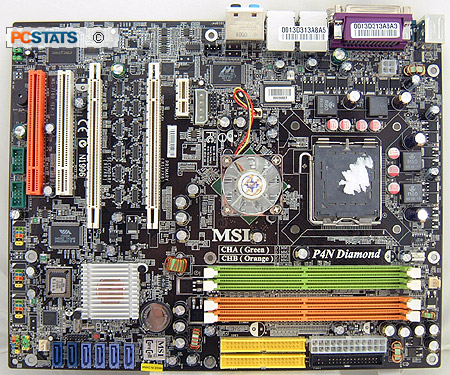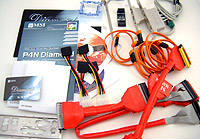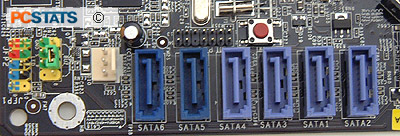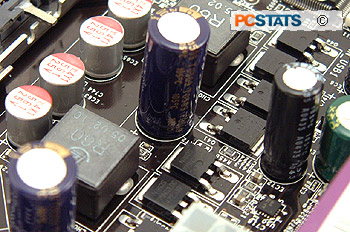When it comes to Pentium 4 processors, the rule thumb is that Intel's CPUs perform best on Intel chipsets. Third party competitors have encountered a whole host
of problems attempting to break into this market; from reliability to product shortages, performance
qualities, and even licensing issues, there are formidable barriers to creating core logic for Intel CPUs.
This is why it's
refreshing to see nVIDIA enter the Intel chipset world. After witnessing what nVIDIA was able to do with AMD in a few short years, the future for what it could
bring to the Intel platform is quite alluring.
At the moment however, the only
Socket 775 Intel
chipset that supports dual videocards is nVIDIA's nForce4 SLI Intel Edition; and
SLI is what many consumers are looking for (even if they don't have plans to utilize it just yet). The AMD version has been hugely successful, especially in the high end market. It's about time Intel users get a taste of this success.
While the
chipset was announced a months ago, nForce4-SLI Intel Edition motherboards
are just now hitting the market. MSI Computers new P4N Diamond
looks well... like a real gem of a motherboard! Obviously based on the nForce4
SLI Intel Edition chipset, the motherboard supports Socket 775 800/1066 MHz FSB Pentium
4/XE, Pentium D and Celeron D processors as well as a maximum of 4GB of DDR2-667
memory.
 |
|
MSI P4N Diamond Motherboard |
|
|

 |
| Includes: |
|
Users
Manual, Quick Install Guide, Diamond Club Membership Paper,
Diamond Club card, Driver CD, SoundBlaster CD, IDE HDD Driver
Diskettes, CPU Clip Installation Paper, Two Rounded Ultra/133
IDE Cables, One Rounded Floppy Cable,
Four Serial ATA Cables, Molex Y Serial ATA Power
Cable Adapter, SLI Bridge, SLI Bridge Place Holder, SLI Bridge,
I/O Shield, USB Bracket, IEEE 1394
Bracket |
 | | |
Other
goodies include dual Gigabit NICs, a Creative Labs Live! 7.1 sound card, IEEE
1394a and an additional Serial ATA II controller. If you feel the need to
upgrade there is one open PCI Express x1 slot (two if you run a single
videocard) and two PCI slots for legacy peripherals. A flurry of USB2.0 headers
and of course two PCI Express x16 slots also dot the large black
motherboard.
Well the
MSI P4N Diamond motherboard sure is colourful, I am sure that is something case
modders will appreciate. The motherboard layout of onboard components is great,
and I wish more motherboard manufacturers would follow MSI's lead here. From the
IDE connectors to the Serial ATA Ports, additional molex power connector and the
onboard headers, everything is in its ideal location without getting in the way
of anything else.
 All Serial ATA
II connectors on the motherboard are compatible with the new 'ClickConnect' standard. As a
Serial ATA user, I am happy to motherboard manufacturers employ this
new standard as it is a lot more secure than the regular Serial
ATA connector. It's just too bad the cables that MSI includes with the
P4N Diamond don't employ the little locking module called 'ClickConnect.' ;-)
All Serial ATA
II connectors on the motherboard are compatible with the new 'ClickConnect' standard. As a
Serial ATA user, I am happy to motherboard manufacturers employ this
new standard as it is a lot more secure than the regular Serial
ATA connector. It's just too bad the cables that MSI includes with the
P4N Diamond don't employ the little locking module called 'ClickConnect.' ;-)
MSI takes customer service to the next level, not only
are its users manual and quick installation guide easy to read and understand,
its motherboards are extremely user friendly. For example just look at the USB
headers on the motherboard, MSI is the only company at the moment which colour
coordinates these headers.  With front panel USB slots gaining huge
popularity, this was definitely a nice touch. I like how MSI places a clear CMOS
button on the P4N Diamond motherboard instead of requiring users to short jumper
pins, more manufacturers should do the same.
With front panel USB slots gaining huge
popularity, this was definitely a nice touch. I like how MSI places a clear CMOS
button on the P4N Diamond motherboard instead of requiring users to short jumper
pins, more manufacturers should do the same.
Capacitor quality is
such a big issue, many motherboard manufacturers are now openly advertising this. The brands found on the MSI
P4N Diamond are Rubycon, Sanyo, Nichicon, HM and a brand that uses a M as
its logo.
Everyone knows that Socket 775 is a lot more fragile
than previous sockets due to the exposed pins. MSI does its part to try and
keep consumers safe by including a special CPU installation mechanism. While experienced users should not have
any problems installing the processor, this clip and accompanying guide will
surely help novice users install the socket 775 Intel Pentium 4
processor into the socket right on the first go.

